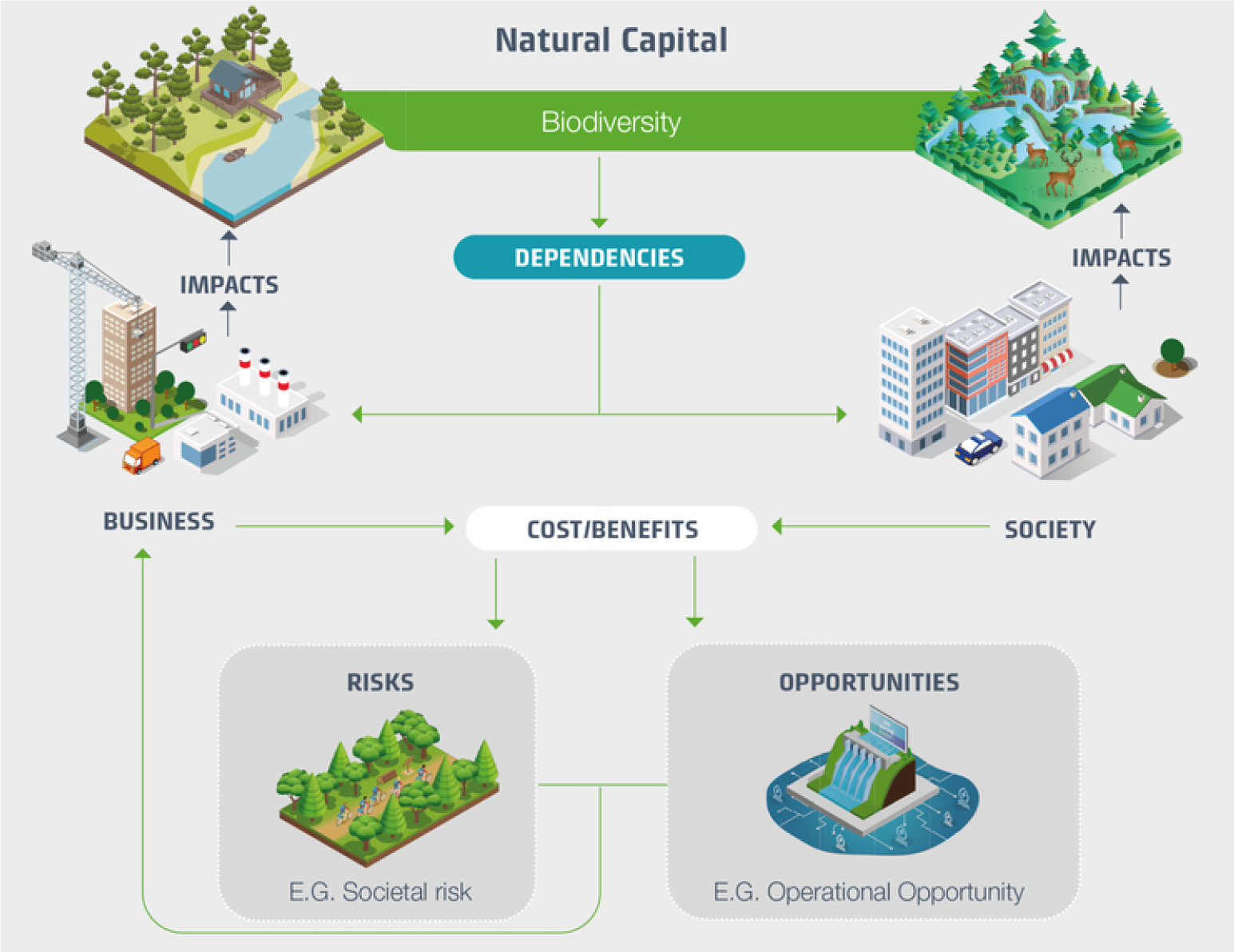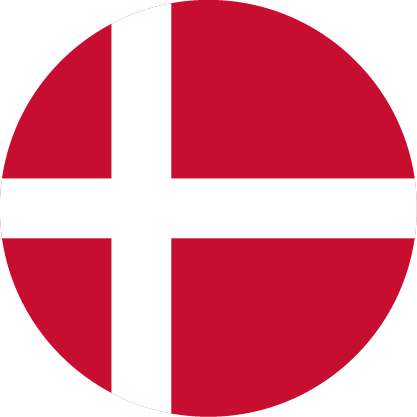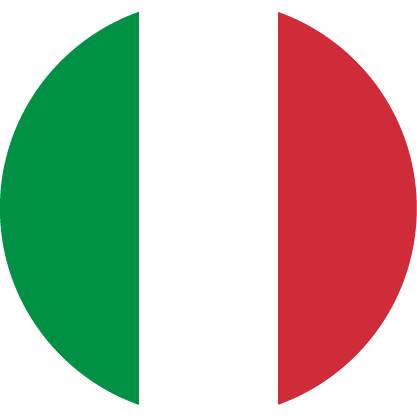Halting the decline in biodiversity is one of the main objectives that companies must address. The protection and conservation of biodiversity in the places where the company's activities are conducted is a priority.
With the aim of preserving the natural spaces where Cellnex's activity takes place and minimising environmental impacts, such as visual or noise impacts, Cellnex has created a specific pillar in its sustainability strategy for "Natural Spaces and Biodiversity”.
In recent years, Cellnex has been working on various actions focused on biodiversity management and evaluating Cellnex's impact on natural spaces. All these actions have resulted in the development of the Natural Capital project.
Biodiversity impacts are managed in Cellnex sites. To reduce visual impact, the company has an internal committee where different solutions are regularly presented and discussed. The policies and practices related to the location of masts and sites, site sharing and initiatives to reduce visual impacts and other impacts in each country where Cellnex operates are outlined below.
The locations where Cellnex Austria builds sites are determined primarily by customers' needs, as is the case with site sharing. With regard to visual impact, Cellnex Austria meets the local requirements laid down by the government. Internal quarterly meetings on concealment solutions are being held to align and review both current and new solutions aimed at reducing visual impacts.
Cellnex, with a dedicated focus on minimising its impact on nature, adheres to stringent regulations in Denmark concerning building requirements, planning regulations, and the placement of new towers in rural areas. The company diligently follows best practices and guidelines from municipal and governmental agencies, underscoring its commitment to ensuring a limited impact on both nature and biodiversity.
Since 2023, Cellnex Denmark has taken a proactive approach to addressing environmental concerns. The company has adopted a policy of planting five new trees for every tree removed during the construction of new sites. Additionally, Cellnex Denmark has established a local biodiversity committee tasked with proposing initiatives in the biodiversity domain. This committee actively encourages employee participation, inviting input and suggestions for biodiversity projects.
At Cellnex France, site locations are mostly driven by customers' requirements. A task force works to promote shared sites and optimise locations wherever feasible. In 2022 a project was initiated with the aim of relocating sites owned by Cellnex, and this initiative has been expanded during 2023 to include sites not owned by Cellnex.
To mitigate visual impacts, Cellnex France employs a specific strategy of landscape integration, which involves disguising telecommunications equipment as other objects, such as artificial trees and chimneys.
Cellnex Ireland implements a detailed planning application process for new developments. This process includes an impact assessment on critical environmental receptors such as people, water, biodiversity, and cultural and architectural heritage. The process also encompasses visual impact assessments.
Cellnex Italy highly values biodiversity preservation and manages its sites in order to minimize any kind of environmental impact. Studies made at September 2021, showed that 866 sites are located in the "Nature 2000 Network". The activities carried out in these sites are carried out in full compliance with the current national and local laws as well as in full compliance with all the regulations by the bodies in charge and / or indicated in the building permits obtained.
The full compliance with laws and regulations makes it possible not to affect the environment where the activities are carried out and, therefore, their influence on the biodiversity hasn’t significant impact.
Cellnex Netherlands reduced noise emission from cooling for the Maastricht location by installing noise-reducing equipment as part of its service expansion on the site. Furthermore, a project on the preservation of peregrine falcons remains active.
Cellnex Poland has translated and adopted corporate documents on Biodiversity Management and Environment and Climate Change Policy. The documents are updated in line with biodiversity recommendations of the two most highly regarded standards: the Dow Jones Sustainability Index and the CDP Climate Change questionnaire from 2023.
On the other hand, during the site design process, architectural style, local conditions and communities are taken into account. Cellnex Poland responds to the needs of the landowners and legal authorities (e.g. monument conservators) and makes sure that the structures do not disturb the surrounding architecture and fit into the surroundings as much as possible. In addition, the local community's opinion is of great importance in the process of selecting a structure.
Whenever technically and economically feasible, Cellnex Portugal initiates operational synergy projects for sites in close proximity, concentrating all customer equipment onto a single site. This strategy effectively reduces the visual impact of infrastructure and minimises consumption of maintenance materials. All of processes are scrutinized by the Municipalities and entities that have infrastructure granting decisions, so the final solutions are aligned with the decisions of these entities. When concealment is required or agreed upon with landowners, Cellnex provides solutions for rooftops (chimneys) and green spaces (trees) to further diminish visual impact.
The most significant impact on biodiversity is the potential disruption caused by our activity in Protected Areas, through the disturbance of facilities located in Biodiversity Protection Zones, as well as the disturbance to living organisms such as storks, crows, parrots, and other birds nesting on our towers.
In terms of visual impact, Cellnex España carries out the mimetisation of structures to reduce this type of impact. There are mainly two types of actions:
Cellnex Sweden is in full compliance with the regulations of the country, region, and municipality concerned. In addition, the company abides by the guidelines and recommendations of the property owners, particularly where there is a need to reduce visual impact. In an internal Cellnex committee, various solutions for reducing visual impact are regularly presented and discussed.
Sites at Cellnex Switzerland are built in line with the local regulations and administrative procedure. In CH, due to the high restriction of the different canton and municipality, there is a strategy to reduce the visual impact because is mandatory to follow the regulation and the requirement of the authority to built our infrastructure.
As a neutral provider of wholesale infrastructure, Cellnex UK aims to manage and deploy sharable communications infrastructure, which is in line with the long-standing planning policy of sharing existing sites and minimising the proliferation of new communications sites. The planning and community relations processes conform to the Code of Practice for Wireless Network Development in England, with a similar code in Wales and similar practices in Scotland and Northern Ireland. The Code of Practice sets out guidance and principles for the deployment of mobile communications infrastructure, based largely on minimising environmental impact, through shared use wherever possible, good design and respect for the context and sensitivity of the site. This is integrated into the implementation of the projects, ensuring that good design and environmental considerations are taken into account at the earliest feasibility stages, right through to the eventual planning submission to the relevant body, such as the local planning authority.
Cellnex UK is also currently involved in initiatives to improve the design of roofs and masts, through an aesthetic design initiative with an architectural consultancy. The planning activities are supported by a Planning and Community Relations Guide (UK-SM-GUI-0005) and a comprehensive set of planning documentation templates which form part of the Code of Practice and ensure that our proposals comply with local and national planning policy. The Code of Practice also has a very strong consultative approach to the development and deployment of electronic communication. To this end, Cellnex UK uses a simple rating system and traffic light form to establish the level of prior community engagement that can be expected before any planning application is submitted or in cases where the project does not require permission. This is prior to and in addition to any engagement that may be undertaken by the local planning authority.
The natural capital perspective involves a new approach that presents nature as the provider of a wide range of benefits. As such, this new perception of nature makes it easier for decision-makers to take into account the interactions of companies with natural systems and the flows between them.
The Task Force for Nature-related Financial Disclosures (TNFD) is a framework that provides a management and risk disclosure structure related to nature. Its ultimate goal is to support a shift in global financial flows away from nature-negative outcomes and toward nature-positive outcomes.
The TNFD report, based on the assessment of Cellnex's dependencies and impacts on Natural Capital, was drafted in 2023. It analyses and prioritises assets relevant to the organisation, and identifies risks and opportunities related to nature.
The TNFD report was prepared following the methodology established by the LEAP approach. In the first phase of the report, the prioritisation of Cellnex Telecom's priority assets is carried out through a heat map that presents the biodiversity value of the geographical environment in which the organisation operates. This prioritisation is carried out considering that the organisation's assets interact with nature in specific locations. Therefore, dependencies and impacts on nature, as well as sources of business risks, are often location-specific.
Risks and opportunities related to nature are also identified based on the dependencies and impacts assessed earlier in the Natural Capital report. Risks are identified to obtain an overview of the risk levels of the organisation's various assets, and opportunities are identified in order to effectively reduce dependencies on nature, minimise environmental impacts and mitigate associated risks.
This analysis allows a global assessment of Cellnex's interaction with its natural environment, as the information obtained in both the Natural Capital report and the TNFD provides a holistic view of how the organisation's activities depend on and impact ecosystems and biodiversity. Furthermore, the development of the TNFD report provides a geographical framework through which to identify specific points on which the organisation should concentrate its efforts to mitigate any adverse impacts on both nature and the organisation's own assets.

Source: Natural capital & business relational models
“For some years now, at Cellnex we have been analysing the impacts and dependencies of natural capital, identifying the associated risks and opportunities, and also geographically locating priority assets that pose a risk to biodiversity and ecosystems. Regulatory demands and those of our stakeholders have led us to move forward and continue working on the analysis and disclosure of these risks and their financial impacts.
To this end, we have become TNFD early adopters, which means that at Cellnex we are pioneers in the adoption of this framework, and provides more credibility and transparency to our disclosures on biodiversity and natural capital”.
Yolanda Romero
Global Environment & Climate Change Expert - Cellnex Corporate
The calculation of the biodiversity footprint is carried out to obtain a detailed view of the organisation's impact on the ecosystems in which it operates and the biodiversity that inhabits these spaces. This will allow the establishment of strategic actions following the mitigation hierarchy for the management of the natural environment. It will also allow the definition of a baseline for the future establishment of Science-Based Targets for Nature (SBTN), science-based targets for the reduction of impacts on nature, as well as the definition of future actions and strategies that will have a positive impact on nature.
Furthermore, at the beginning of 2024, the company became an "Early adopter" of the TNFD, thus demonstrating its commitment to adopting this framework and dissemination. to the organisation, as a TNFD early adopter.

Source: TNFD
Cellnex identifies and assesses biodiversity legislation applicable to the Company using the SALEM tool
Biodiversity loss and the transformation of ecosystems are real challenges that threaten to cause serious harm to human beings and worsen the impact of climate change. Cellnex recognises the importance of identifying which of its sites are in nature protection areas in the countries where the company operates. With the update of the Environmental and Climate Change policy, specific commitments regarding biodiversity and non-deforestation have been incorporated.
Cellnex identifies and assesses biodiversity legislation applicable to the Company using the SALEM tool. The tool is updated monthly with European, national and local legislation related to environment management, biodiversity, energy, etc. The SALEM tool was introduced in 2021 through a series of training and awareness-raising sessions that were held at various Cellnex Business Units. The tool is currently fully implemented and audits are carried out on a periodic basis.
118.330
sites analysed[26]
8 %
of sites in protected areas
[26] Including some of the forecasted roll-outs.
Another tool that Cellnex uses is the DaNA tool (DaMa in the case of Cellnex Spain). This tool is used to geolocate Cellnex sites in all the territories where the Company operates. It can identify the sites that are located in spaces within the Nature 2000 Network or in protected areas in line with the IUCN categories. The tool also makes it possible to apply climatic scenarios to evaluate how climate change may affect these sites and consequently apply preventive and corrective measures.
 |
10 % |
(2023) |
|
10 % |
(2022) |
|
 |
1 % |
(2023) |
|
1 % |
(2022) |
|
 |
9 % |
(2023) |
|
6 % |
(2022) |
|
 |
3 % |
(2023) |
|
2 % |
(2022) |
|
 |
5 % |
(2023) |
|
5 % |
(2022) |
|
 |
4 % |
(2023) |
|
4 % |
(2022) |
|
 |
15 % |
(2023) |
|
14 % |
(2022) |
|
 |
9 % |
(2023) |
|
9 % |
(2022) |
|
 |
11 % |
(2023) |
|
10 % |
(2022) |
|
 |
2 % |
(2023) |
|
1 % |
(2022) |
|
 |
1 % |
(2023) |
|
1 % |
(2022) |
|
 |
7 % |
(2023) |
|
10 % |
(2022) |
Cellnex also evaluates the impact that its sites have on the environment (such as visual impact), carrying out studies to enable sites to blend into the rural or urban setting where they are located, or developing projects to integrate the sites into the environment. One of the main impacts managed by Cellnex relates to birdlife, especially at Cellnex Spain, as the sites are located in stopover areas for migratory birds. In this regard, storks are protected by laws and regulations in Spain, where it is prohibited to disturb them or damage their eggs or nests during the nesting period.
Because of climate change, the length of stopovers for birds in Spain has increased to as long as 10 months, making it difficult to carry out maintenance work on Cellnex sites. This results in costs due to non-compliance with the SLA and customer dissatisfaction.
Each nest weighs about 100 kg, and this causes a problem because it reduces load capacity, in addition to increasing the risk of falling from the nest and danger for people who work there. To prevent this risk and be able to carry out maintenance procedures at the sites, Cellnex Spain has designed and built structures for stork nests on its towers: Nest Baskets. Moreover, this structure allows Cellnex to load the weight of the nest on the most appropriate part of the tower, simultaneously preventing the nests from impacting its customers' antenna systems and improving the load capacity.
Cellnex has installed over 50 nest baskets at sites where it was technically feasible. Thus far, they have proved to be effective, as the storks have returned and made their nests in the baskets that were installed.
Where possible, Cellnex aims to foster biodiversity at its sites, but this is balanced against our core activities of operating critical communication infrastructure and services that operate 365 24/7 and require upgrades and maintenance to ensure businesses and communities remain connected. Biodiversity initiatives therefore have to reflect these operational constraints and need to and can vary from site to site. Certain biodiversity initiatives like bird boxes may not be suitable, but there is a commitment on working with relevant bodies where necessary to promote biodiversity as appropriate on a Cellnex site.
Cellnex Spain also collaborates with the Catalan Government in the Exocat project, which focuses on identifying exotic species with invasive behaviour, as they have a considerable impact on natural ecosystems, other species or even human and economic activities, leading to loss of native biodiversity. Every two years, the Catalan Government prepares an annual report entitled "Les espècies exòtiques invasores a Catalunya", which includes the number of invasive species detected. Cellnex is mentioned as a collaborating company in the last report published, corresponding to 2019-2020.
Within the 'Stork Nest Baskets' Project shared by the Environmental team of Cellnex España with the rest of the Cellnex territories in 2022, as a model of good environmental practices that reinforces Cellnex's commitment to the protection and preservation of biodiversity, in 2023, the department conducted an analysis of the effectiveness of the baskets installed in 2021 and 2022. Of the total 195 installed baskets, 88% have proven to be effective.
Cellnex Netherlands actively takes the nesting season into account in its operations by planning work and technical visits to towers in such a way that nesting peregrine falcons are not affected, or are impacted as little as possible. In this regard, Cellnex Netherlands has installed nesting boxes on 16 of its 24 media towers, in consultation with the Peregrine Falcon Society. In 2023, the peregrine falcons suffered from bird flu. Still they could find coverage in Cellnex nests and at least 11 sibling newborns have been registered.

In 2023, Cellnex Telecom, Cellnex España, and the Cellnex Foundation continued their collaboration with the Life Nature Funds to implement measures for conserving agro-steppe habitats and species in the Natura 2000 Network. The purpose of Cellnex's participation in this project is to compensate the loss of biodiversity due to the presence of birds at its facilities as a consequence of its activity. The actions focus on restoring 300 hectares of degraded natural pastures, their biodiversity and quality; signing agreements with landowners to promote sustainable practices; promoting crops with greater added value on at least 100 hectares; fixing power lines that are a danger to agro-steppe birds; and strengthening alliances between farmers to improve habitats. The project will last five years and €20,000 will be invested per year. The actions will be carried out in a border area between Spain and Portugal.

Another measure to offset the removal of nests is Cellnex España's collaboration with TRENCA, an organisation located in Catalonia that relocates and builds stork nests in suitable nesting areas. This measure has been ongoing in 2023.
Before starting...
We use our own and third-party cookies for analytical purposes and to show you personalized advertising based on a profile prepared from your browsing habits (for example, pages visited). Click HERE for more information. You can accept all cookies by pressing the "Accept" button or configure or reject their use by pressing the "Configure" button.
ACCEPT AND CONTINUE Configure cookies